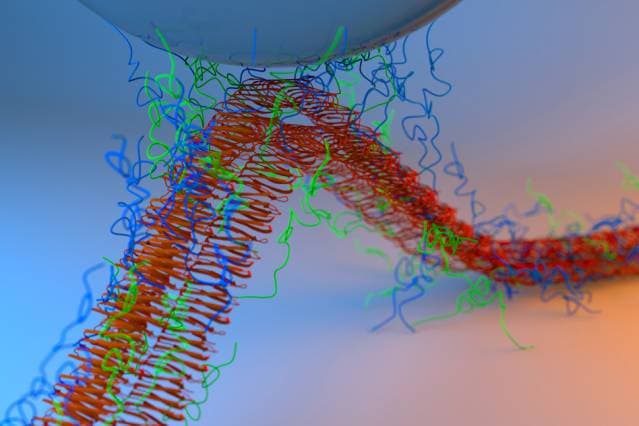Shellfish-Inspired Glue Could Repair Ships & Help Wound Healing - MIT Engineers
Deriving inspiration from nature once again, the engineers at MIT have been up to something really useful and interesting. They have developed a new hybrid material that can act as an waterproof adhesive and thus find applications in a wide range of areas. Taking cue from Shellfishes, which secrete a very sticky substance that helps them in clinging on to rocks or even underwater ship hulls, the MIT engineering team developed a bacteria that produces the glue with naturally sticky mussel proteins. Moreover, the bacteria produce slimy layers (sticky material) on the surfaces they grow. By combining these two, the MIT engineers were able to develop sticky proteins that serve as underwater adhesives (even stronger than the Mussels Shellfish).
Their aim behind this project was to combine various functional domains to build materials that exhibit better performance. Hailing from Biological-Electrical engineering and computer science background, the MIT researchers found their main source of inspiration in underwater organisms which are known to produce different kinds of sticky materials that help them stick on surfaces with different textures & patterns. Now these naturally found adhesives are complex and their properties could be replicated using the E.coli bacteria created previously by some researchers.

In their research work, Timothy Lu, an associate professor at MIT and senior author of the paper based on this project, worked with his team to produce proteins made up of curli fibers bonded to either mussel foot protein 3 or 5. The researchers incubated the proteins after purifying them and formed dense fibrous meshes out of it. The material produced after this process is a flexible adhesive that works on wet as well as dry surfaces.
To test their new material, the team made use of a technique known as atomic force microscopy that probes the surface of a sample with a tiny tip. Their results showed that the new biologically inspired glue was stronger than most naturally found adhesives in different organisms. The adhesive could bound strongly to tips made of silica, gold, and polystyrene. Though the technology is still at a nascent stage and the team has been able to produce only small quantities of the new adhesive, they are working on both - improving the adhesive's strength and producing large quantities.
When it comes to applications of such new glue, the team shares that it could be used to repair damages on ships, help in healing wounds and even used in surgical incisions. If the team is able to create films of bacteria that form up a 'living glue', they hope to create a smart product that automatically senses when there's some damage to a surface and fix it by secreting the adhesive. How wonderful is that.
Let us know your thoughts in comments below.
Source: #-Link-Snipped-#
Their aim behind this project was to combine various functional domains to build materials that exhibit better performance. Hailing from Biological-Electrical engineering and computer science background, the MIT researchers found their main source of inspiration in underwater organisms which are known to produce different kinds of sticky materials that help them stick on surfaces with different textures & patterns. Now these naturally found adhesives are complex and their properties could be replicated using the E.coli bacteria created previously by some researchers.

In their research work, Timothy Lu, an associate professor at MIT and senior author of the paper based on this project, worked with his team to produce proteins made up of curli fibers bonded to either mussel foot protein 3 or 5. The researchers incubated the proteins after purifying them and formed dense fibrous meshes out of it. The material produced after this process is a flexible adhesive that works on wet as well as dry surfaces.
To test their new material, the team made use of a technique known as atomic force microscopy that probes the surface of a sample with a tiny tip. Their results showed that the new biologically inspired glue was stronger than most naturally found adhesives in different organisms. The adhesive could bound strongly to tips made of silica, gold, and polystyrene. Though the technology is still at a nascent stage and the team has been able to produce only small quantities of the new adhesive, they are working on both - improving the adhesive's strength and producing large quantities.
When it comes to applications of such new glue, the team shares that it could be used to repair damages on ships, help in healing wounds and even used in surgical incisions. If the team is able to create films of bacteria that form up a 'living glue', they hope to create a smart product that automatically senses when there's some damage to a surface and fix it by secreting the adhesive. How wonderful is that.
Let us know your thoughts in comments below.
Source: #-Link-Snipped-#
Replies
You are reading an archived discussion.
Related Posts
A team of engineers from UK have managed to take DIY to the next level by designing a laptop that can be fabricated on a 3D printer and takes just...
As promised and well within time, the Finnish company Jolla Ltd. founded by ex-Nokia employees has launched the Jolla smartphone in India on Snapdeal.com, the e-commerce portal that's bringing smartphones...
is microwave heating economical in processing a batch of around 5000 kg batch.??? i read that microwave heating ll be very efficient in mono-sulfonation of naphthalene...ll it be industrially economical.....
A year ago, when i was in college, almost every branch were having certification course like SAP, autoCAD, MATLAB, embedded system etc, organised by training cell of our college which...
The Indian Space Research Organisation aka ISRO created history this morning in the deep space, when most of you were in deep sleep. At 4.17 AM today, the Mars spacecraft...
